Flore Gardner is a visual artist and her practice explores drawing in different forms, from small diary drawings to embroidery and knitting to monumental installations of cord. The idea of line is essential to her work, be it the drawn 2D line or the embroidered/knitted/sewn 3D thread.
Half French, half Scottish, Flore lives and works in-between these two countries, cultures and languages. She obtained a Doctorate (Ph.D.) in Fine Art at the Sorbonne University in Paris in 2007, and has been exhibiting work in the UK, France and internationally since 2004.
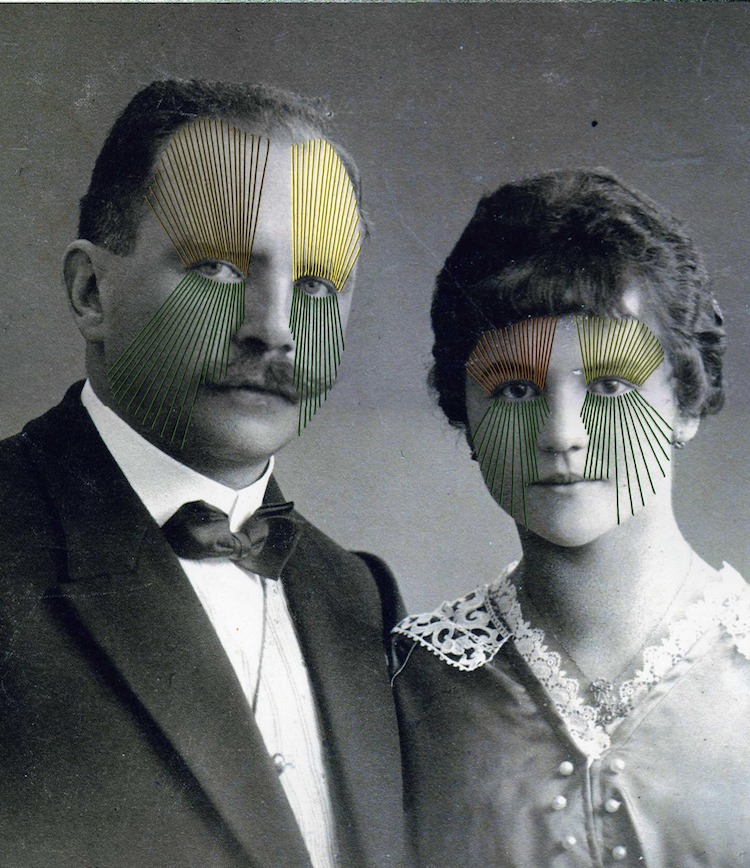
From 2003-2005 she ran an artist’s restaurant in Marseilles, France, as part of her PhD investigation into everyday activities pushed to extreme absurds, serving only monochromatic food, 1 colour per day.
This year Flore went on a residency at Cove Park in Scotland, with 6 other artists, a very constructive week during which she took the decision to concentrate solely on her drawing practice.
In this interview, Flore tells us how studying medicine initially influenced her artwork and why drawing is her main technique and the impact it’s had on her designs.
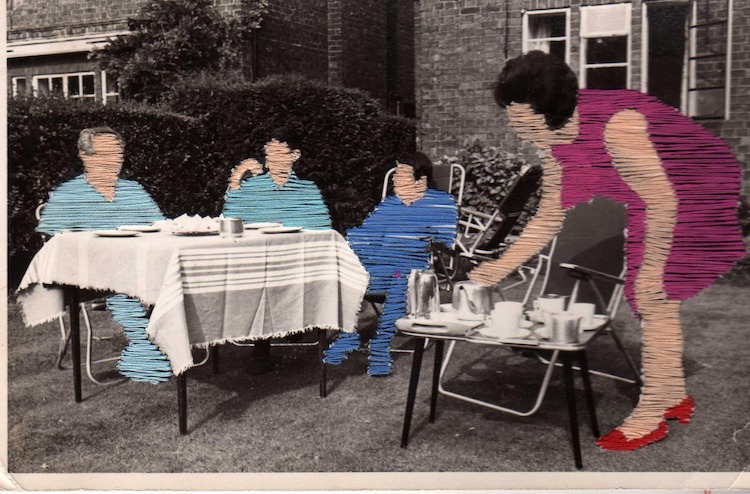
The pleasure of making
TextileArtist.org: What initially attracted you to textiles as a medium?
Flore Gardner: I started using textiles during my Phd studies in Fine Art, making absurd oversized clothes which I would wear during performances. Previously, I had been making sculpture using cement, fibre glass wool and resin, and for me, textile was another sculptural material, and these oversized clothes were soft sculptures.
And, more specifically, how was your imagination captured by stitch?
I first started making knitted pieces because I enjoyed the repetitive, long process which allowed the mind to wander while the hands were busy. I made giant pieces of knitting of no particular use but just for the pleasure of making.
I went on to use embroidery as my practice gradually turned towards drawing. Embroidery allows you to embellish an already existing image, adding or hiding certain details.
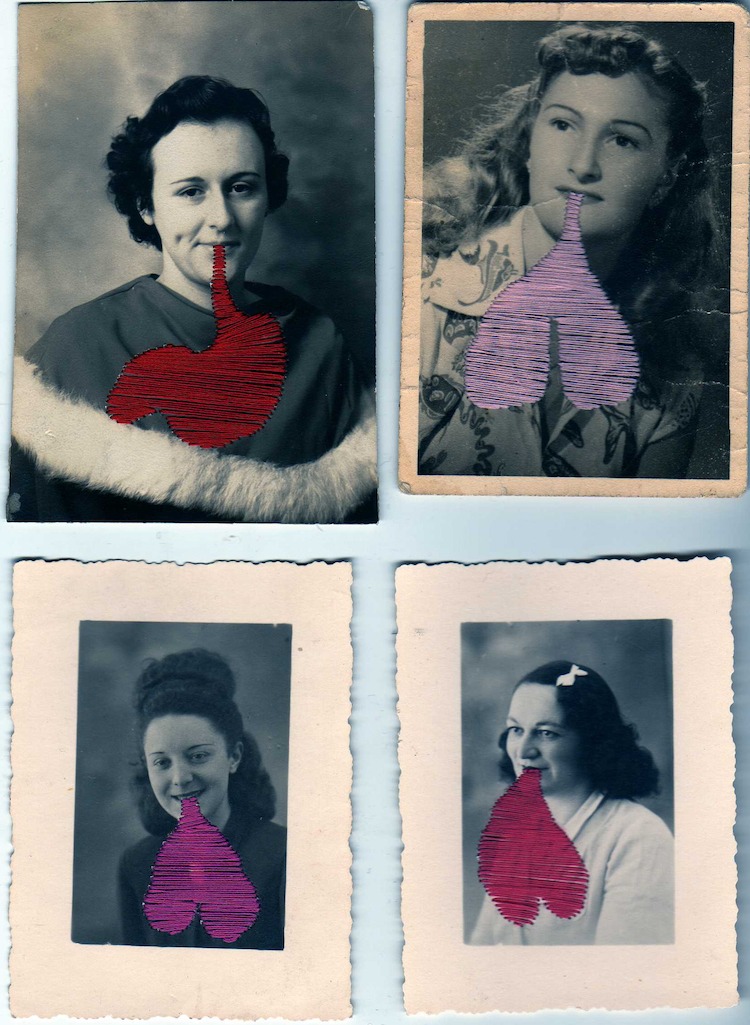
What was your route to becoming an artist?
I started out doing medicine at Edinburgh University, and this, especially the dissection classes, has influenced my work, particularly my drawings.
I left Scotland to go to France, where I spent a year thinking, before embarking on Fine Art studies in Montpellier, Amiens, Nice and Paris, where I obtained my PhD in 2007. Since then I have been exhibiting my work in the UK, France, China, the USA, Sweden, Finland and others.
Tell us a bit about your chosen techniques.
My main technique is drawing, with pen and coloured pencil. Line is very important in my work, I strive towards a fine wiry line using very fine pens or nibs. I then colour in these line drawings with the ‘wrong’ colours.
I also make 3D work, a kind of translation of my drawings, where the line becomes thread or cord, drawing in space.
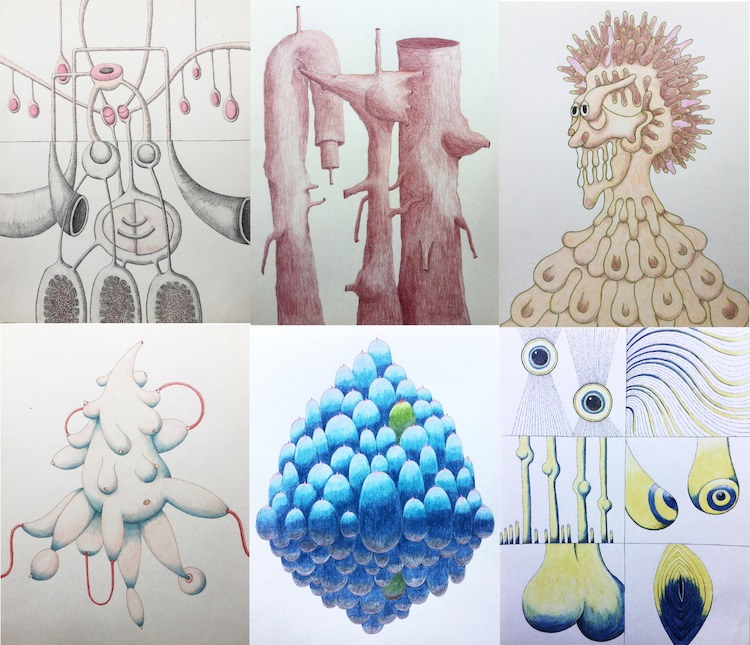
Transforming the drawn line
How do you use these techniques in conjunction with embroidery?
For me, embroidery is just another form of drawing, in relief. Sometimes translating my small diary drawings consists in transforming the drawn line into an embroidered thread drawing over a photograph. So embroidery is a kind of translation between dimensions.
How would you describe your work and where do you think it fits within the sphere of contemporary art?
I am a visual artist using drawing in its expanded field. I have no desire to represent anything seen, but rather am interested in the otherworldly, the odd, the un(be)seen, things gone wrong. In this digital age full of perfect images, there has been a recent return to drawing and its primary means, and I fit into this tendency.
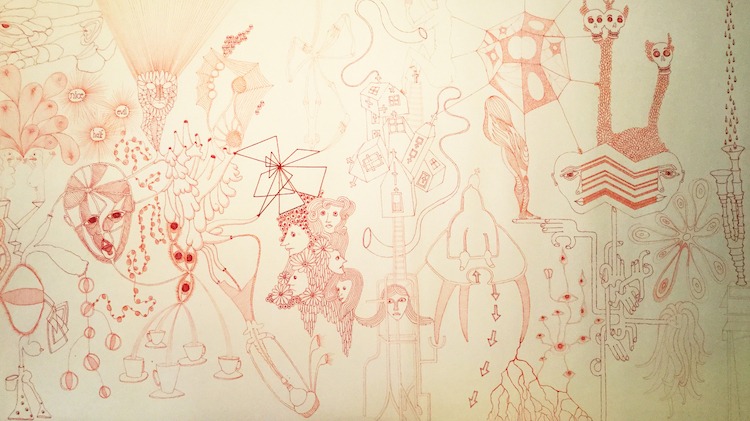
Do you use a sketchbook? If not, what preparatory work do you do?
I use a drawn diary in which I make at least one drawing a day. These drawings form the basis of all my practice ; they are enlarged, translated, transformed into larger final drawings and presented in clusters which change in number/order to tell different stories.
I also collect images from books and magazines, old found photographs and other found images. I am always looking at images, this is for me preparatory work.
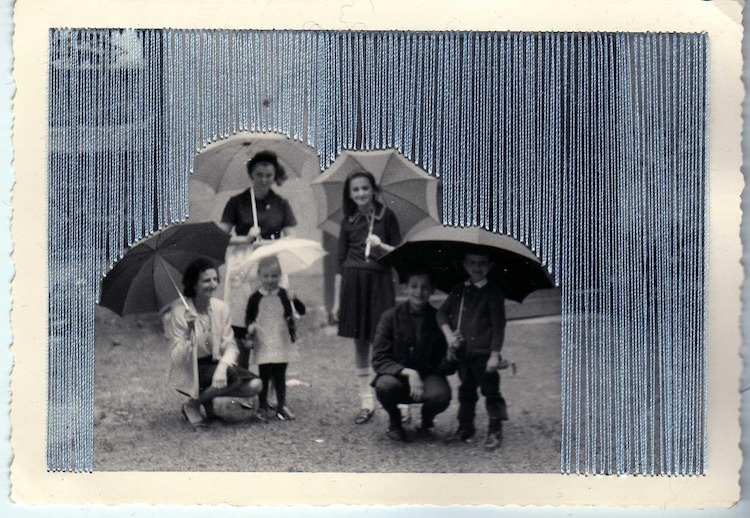
Tell us about your process from conception to conclusion.
I start by looking, looking, looking, and collecting images. I make small drawings from these images or from my inside my head. I then transform or translate these small drawings into other kinds of drawings; this could be an embroidered photograph, an ink and coloured pencil drawing or even an installation.
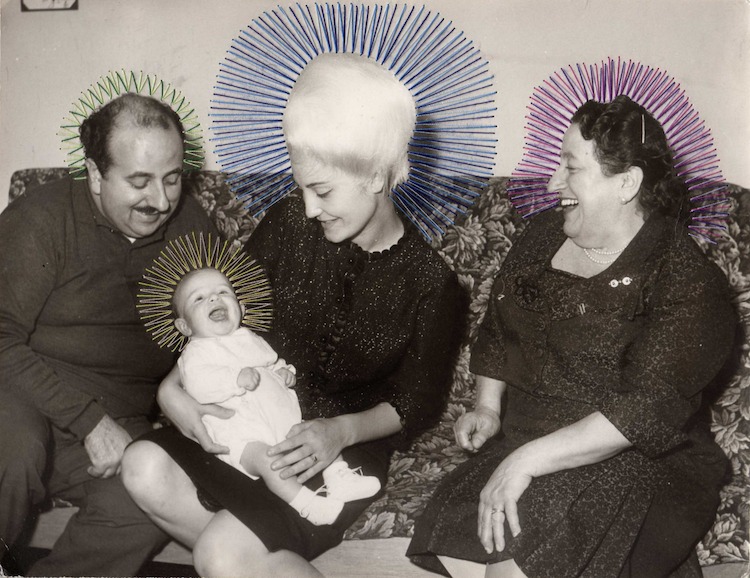
What environment do you like to work in?
I like to work totally alone, in my studio at home, listening to the radio if I’m drawing or in silence if I’m writing. Or, if I am embroidering or knitting, I can sit in front of the TV or be chatting since these tend to be very long repetitive processes which allow you to do something else at the same time, a bit like doodling.
Who have been your major influences and why?
I love Louise Bourgeois’ drawings for their use of the line, fine and feathery. Some of her Insomnia drawings, done during the night when she could not sleep, remind me of knitting or sewing processes in their repetitive quality. Bourgeois used sewing and fabric to make many of her sculptures and the figure of the spider as a weaver is recurrent in her oeuvre.
The German-American sculptor Eva Hesse made drawings of organic-like abstract machines, and thread-like hanging sculptures very evocative of body parts.
I admire Paul van der Eerden for the coherence of his body of work and power it has despite the modesty of his technique.
Other influences for me are Outsider art, for it’s compulsive side and it’s profusion of detail, and Japanese erotic prints just for their beauty.
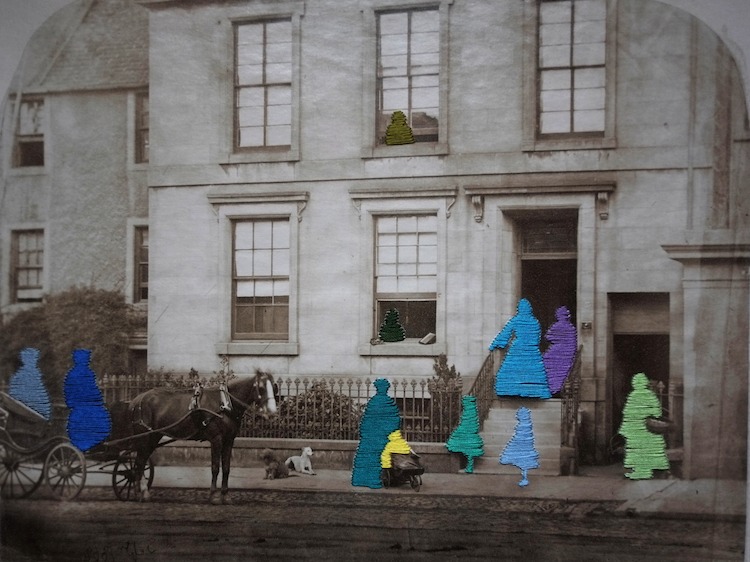
Provoking surprise
Tell us about a piece of your work that holds particularly fond memories and why?
The M(ob)ile is particular piece in my body of work. It consists of a 1-mile long red French-knitted cord, which I took 4 months to knit working on it every day. This was a particular period, extremely repetitive and as such quite meditative.
It is rolled up in a ball which I transport to different places and then install in interior or exterior architectural sites, for example around a church, on the outside of a mill, or inside a small room creating a dense web of cord.
I consider this piece as a 3D drawing in space in a monumental scale. The sheer scale of the knitting is absurd and its encounter tends to provoke surprise and reveal the place in a new way. This knitted cord also evokes Ariadne’s red thread given to Theseus to find his way out of the labyrinth and escape from the blind Minotaur trapped inside.
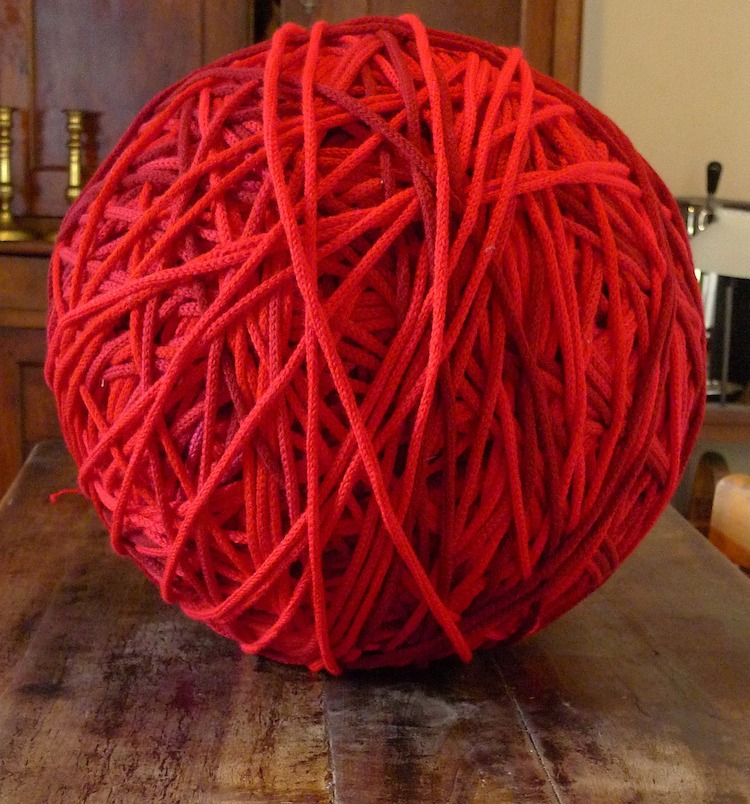
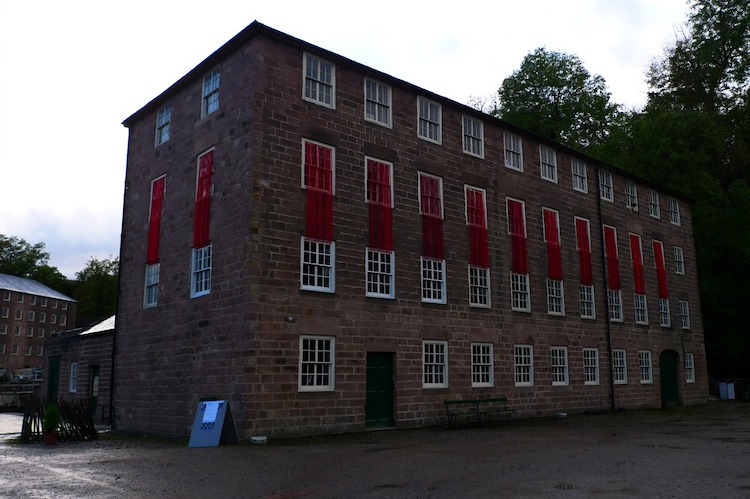
How has your work developed since you began and how do you see it evolving in the future?
I have moved from sculpture to soft sculpture to embroidered photographs to drawing, in it’s expanded field. I have recently decided to concentrate solely on my drawing, which has always been part of my practice but which I have rarely shown. Drawing has become more and more important for me and I feel the need to be able to make using the most basic of tools, pen and paper and coloured pencils.
Drawing has become more and more important for me and I feel the need to be able to make using the most basic of tools, pen and paper and coloured pencils.
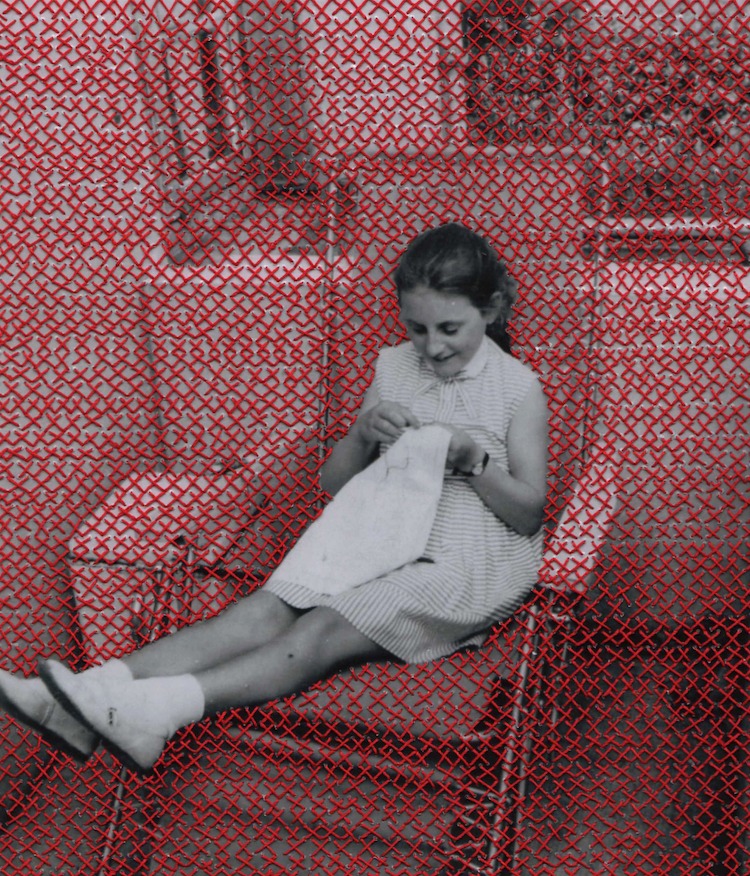
Can you recommend 3 or 4 books for textile artists?
- [easyazon_link identifier=”B00FKYW7F2″ locale=”UK” tag=”wwwtextileart-21″]Drawn to Stitch: Line, Drawing and Mark-Making in Textile Art by Gwen Hedlay
- [easyazon_link identifier=”B01K0V4004″ locale=”UK” tag=”wwwtextileart-21″]Thread Lines , The Drawing Centre by Joanna Romanow
- [easyazon_link identifier=”0713451181″ locale=”UK” tag=”wwwtextileart-21″]A History of Hand Knitting by Richard Rutt
- [easyazon_link identifier=”1902854241″ locale=”UK” tag=”wwwtextileart-21″]Louise Bourgeois, Stitches in Time by Frances Morris
What piece of equipment or tool could you not live without?
Definitely notebook and pen.
Where can readers see your work this year?
Hopefully, I will be showing a new installation-performance-drawing at the Hidden Door Festival in Edinburgh in May/June 2017.
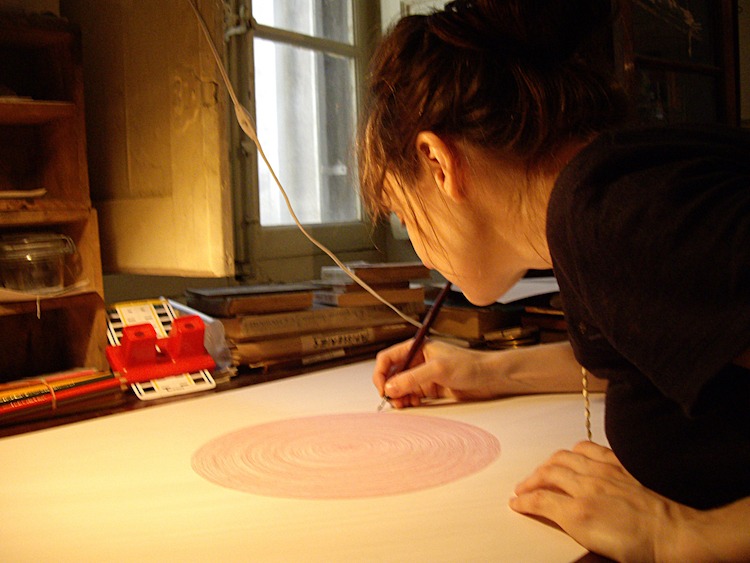
For more information visit: www.floregardner.wixsite.com
If you’ve enjoyed this interview why not share it with your friends on Facebook using the button below?
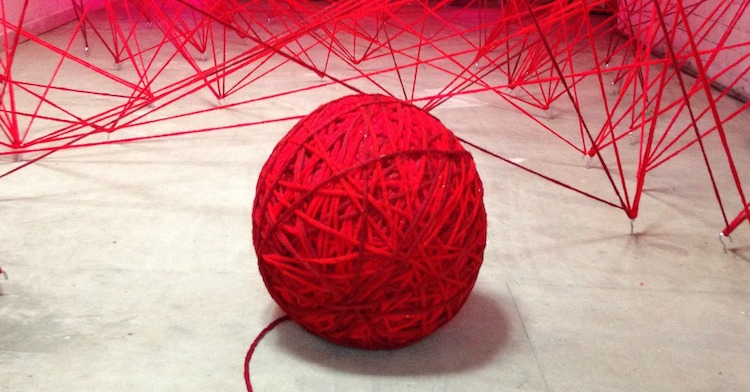
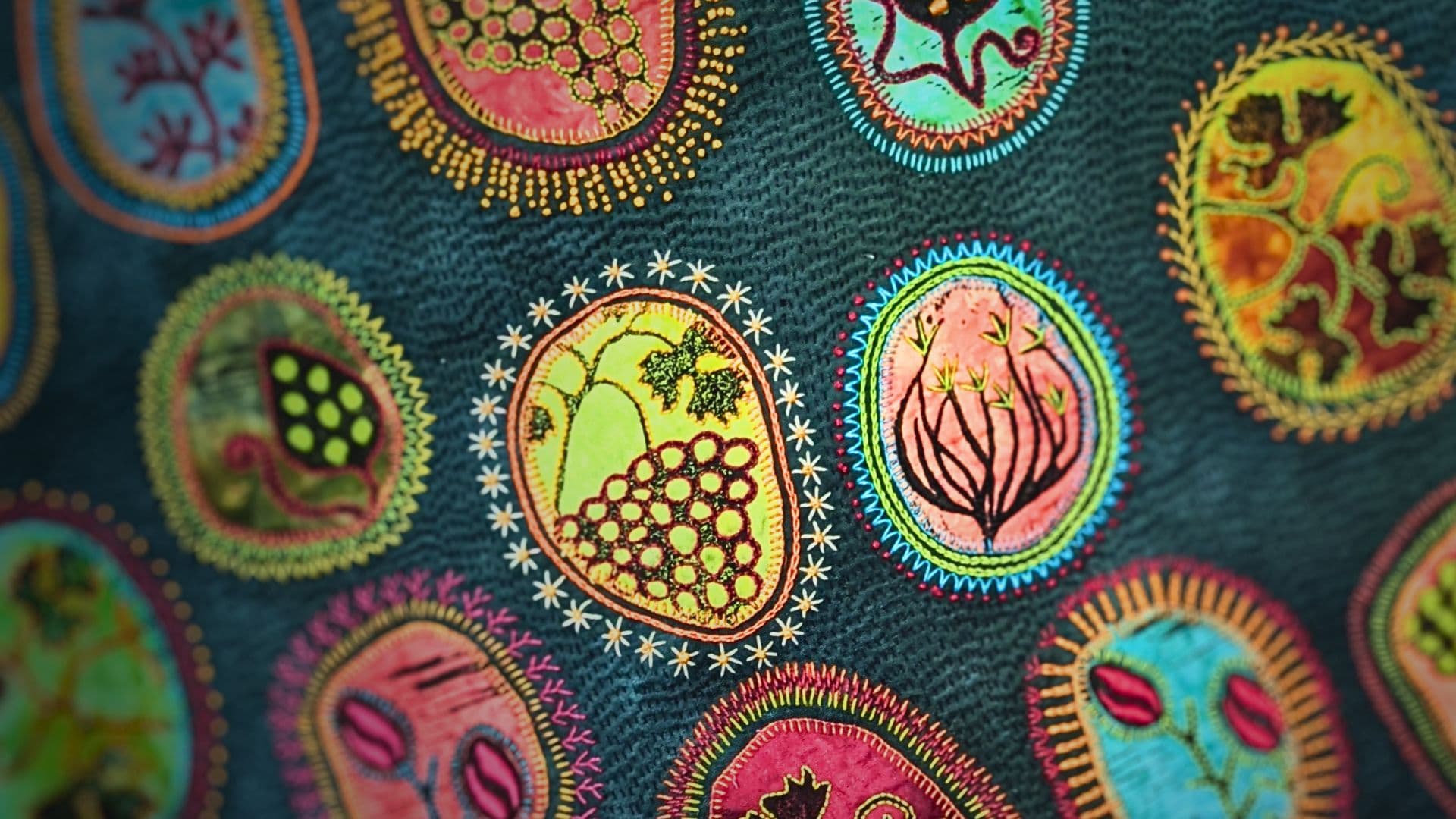
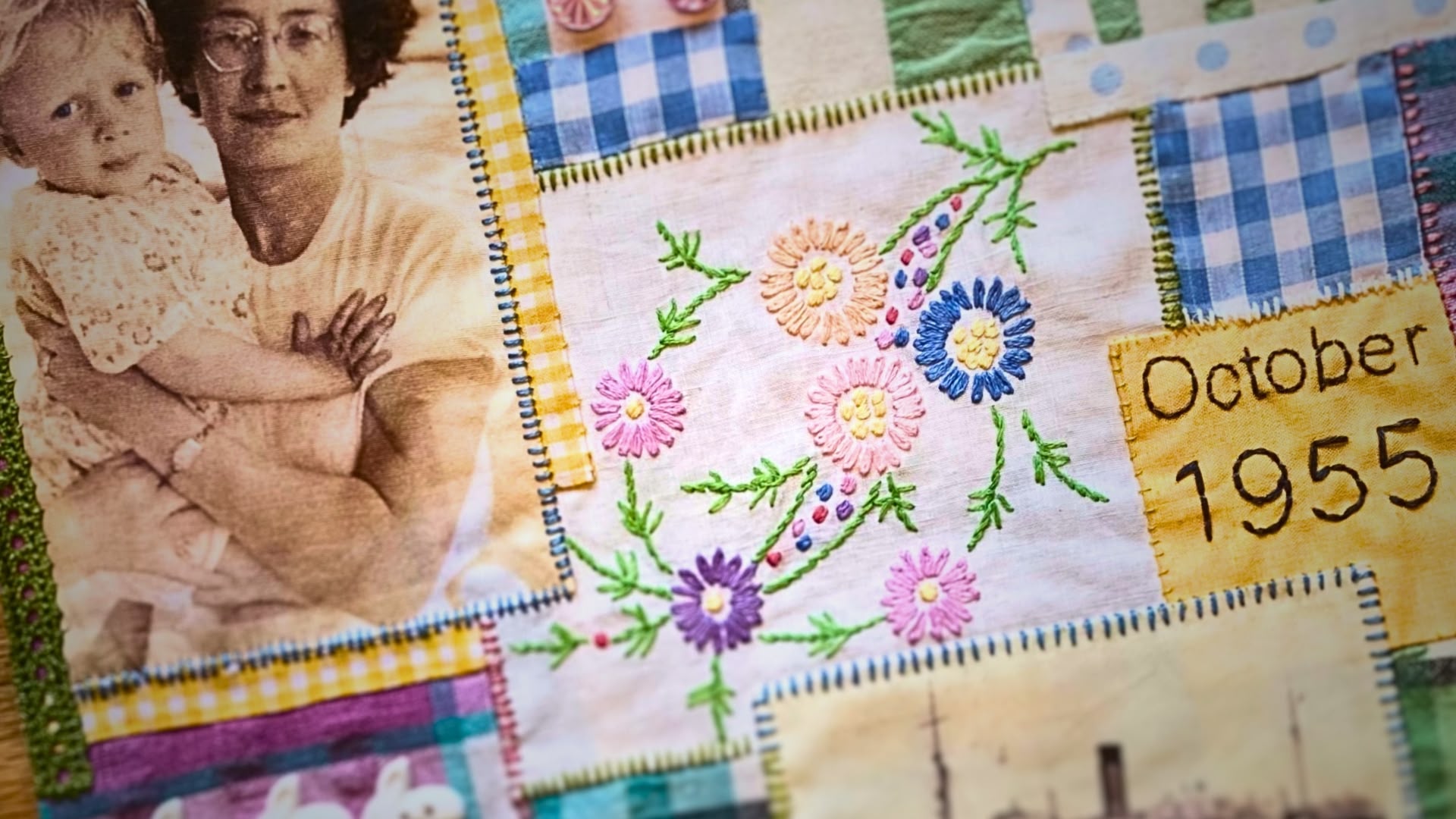
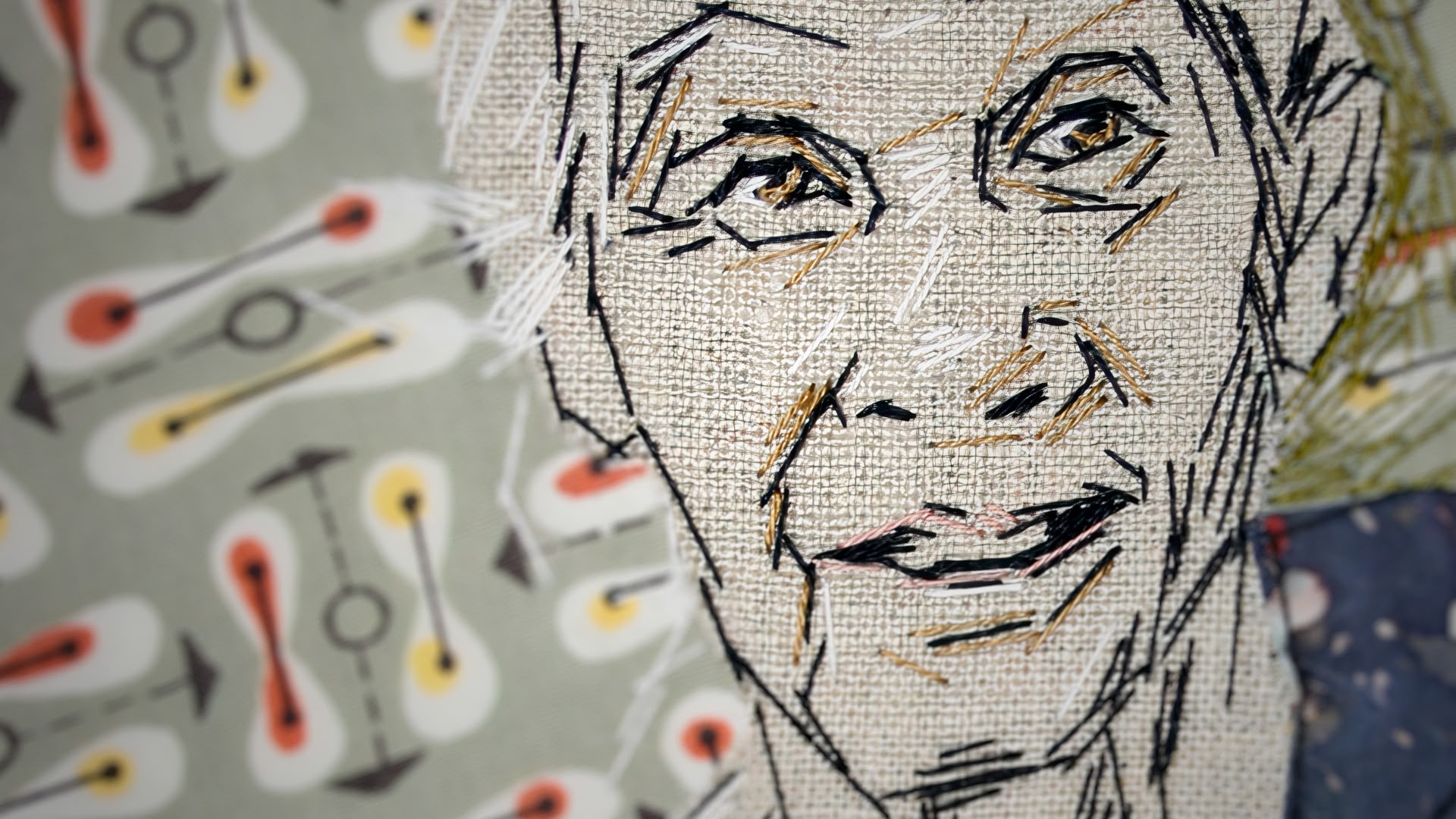
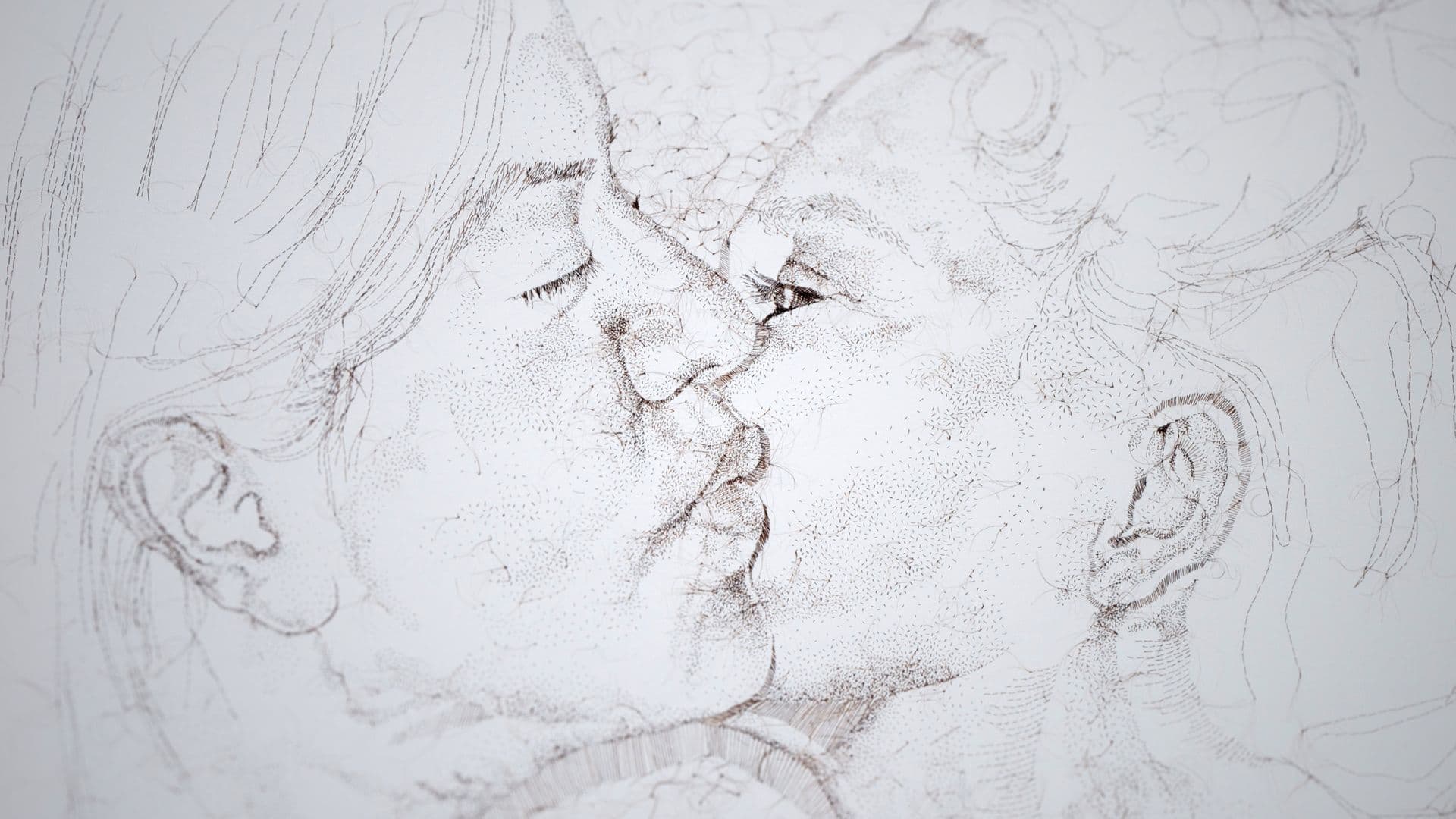
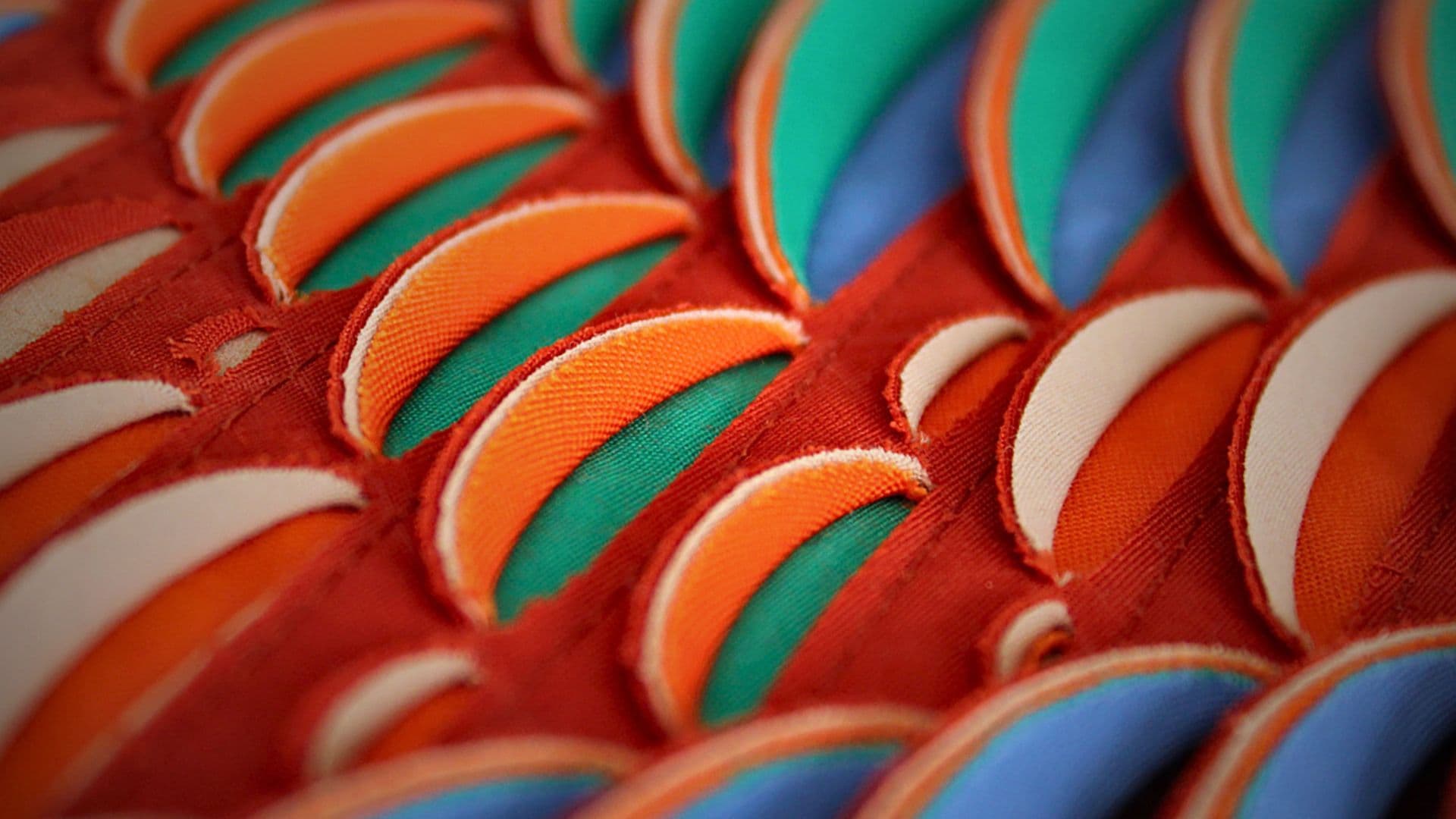

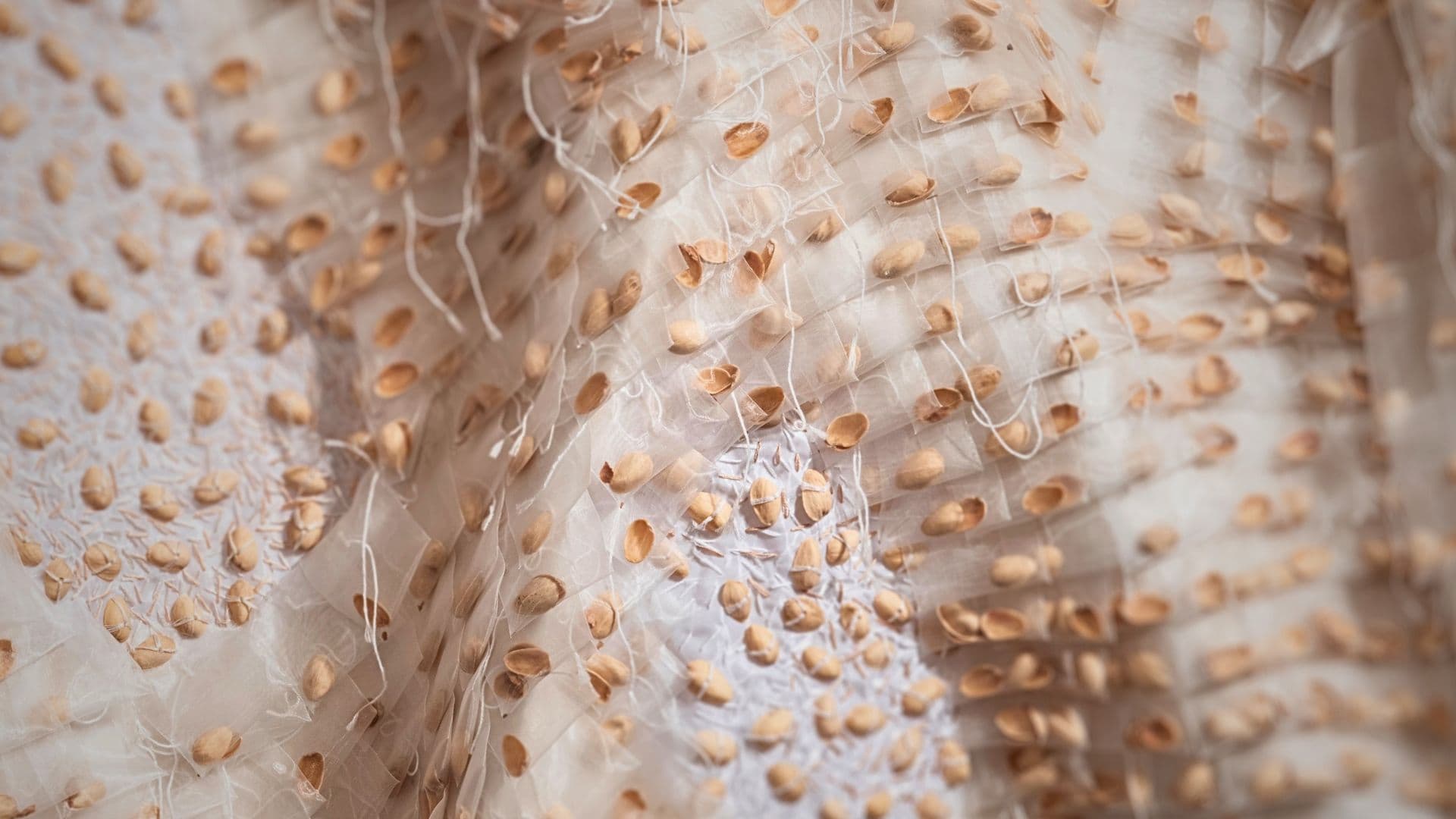
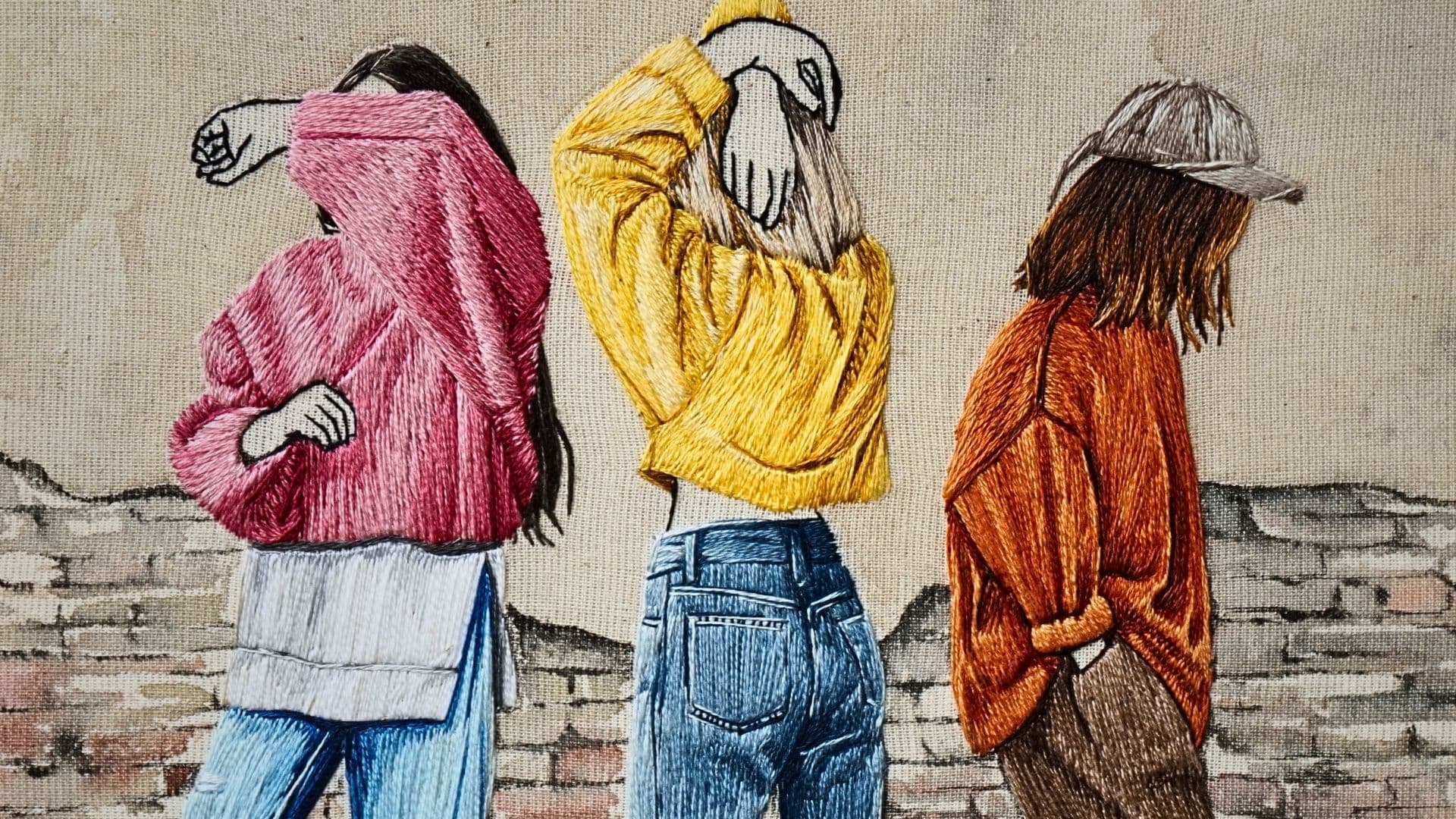
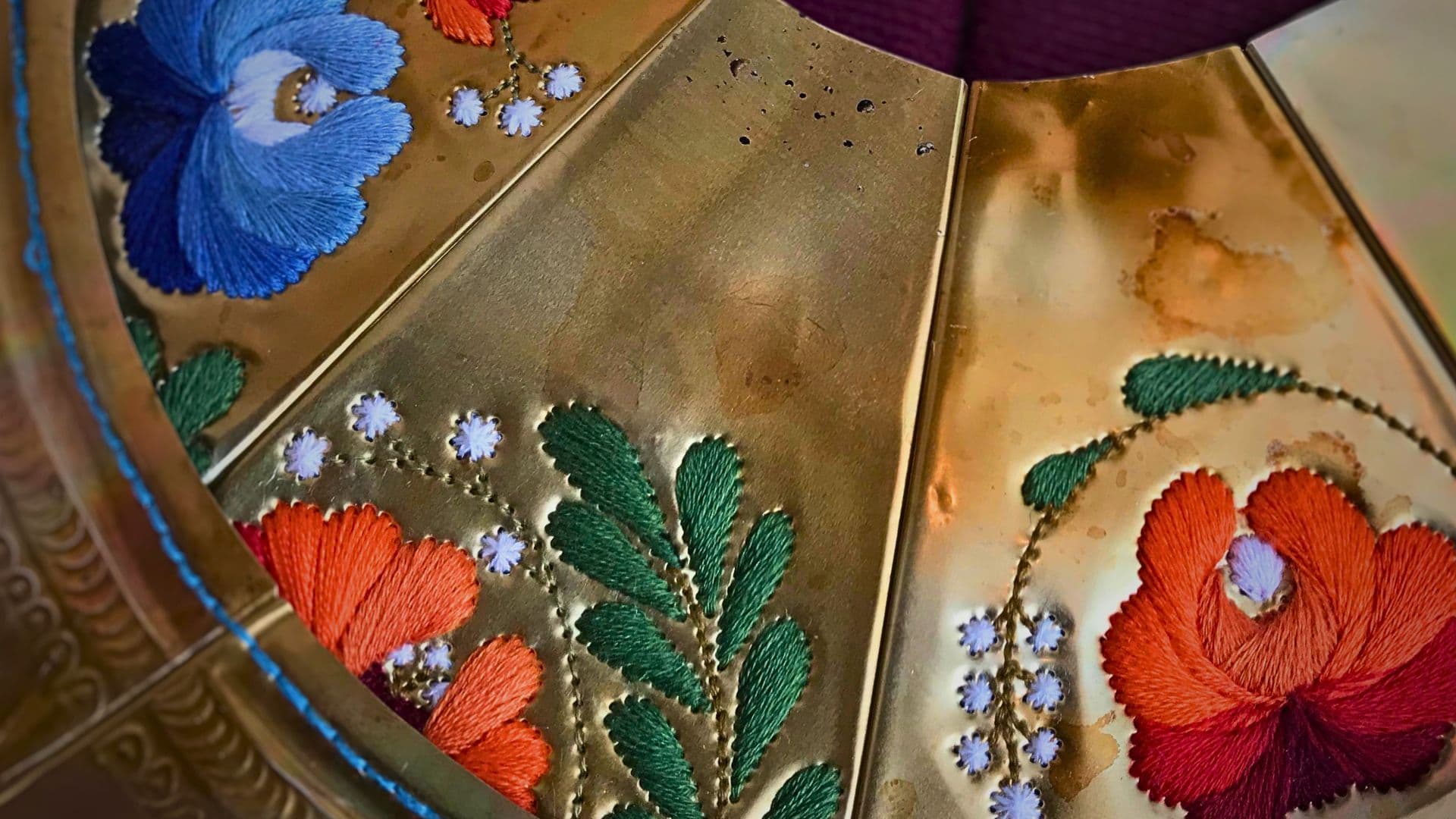
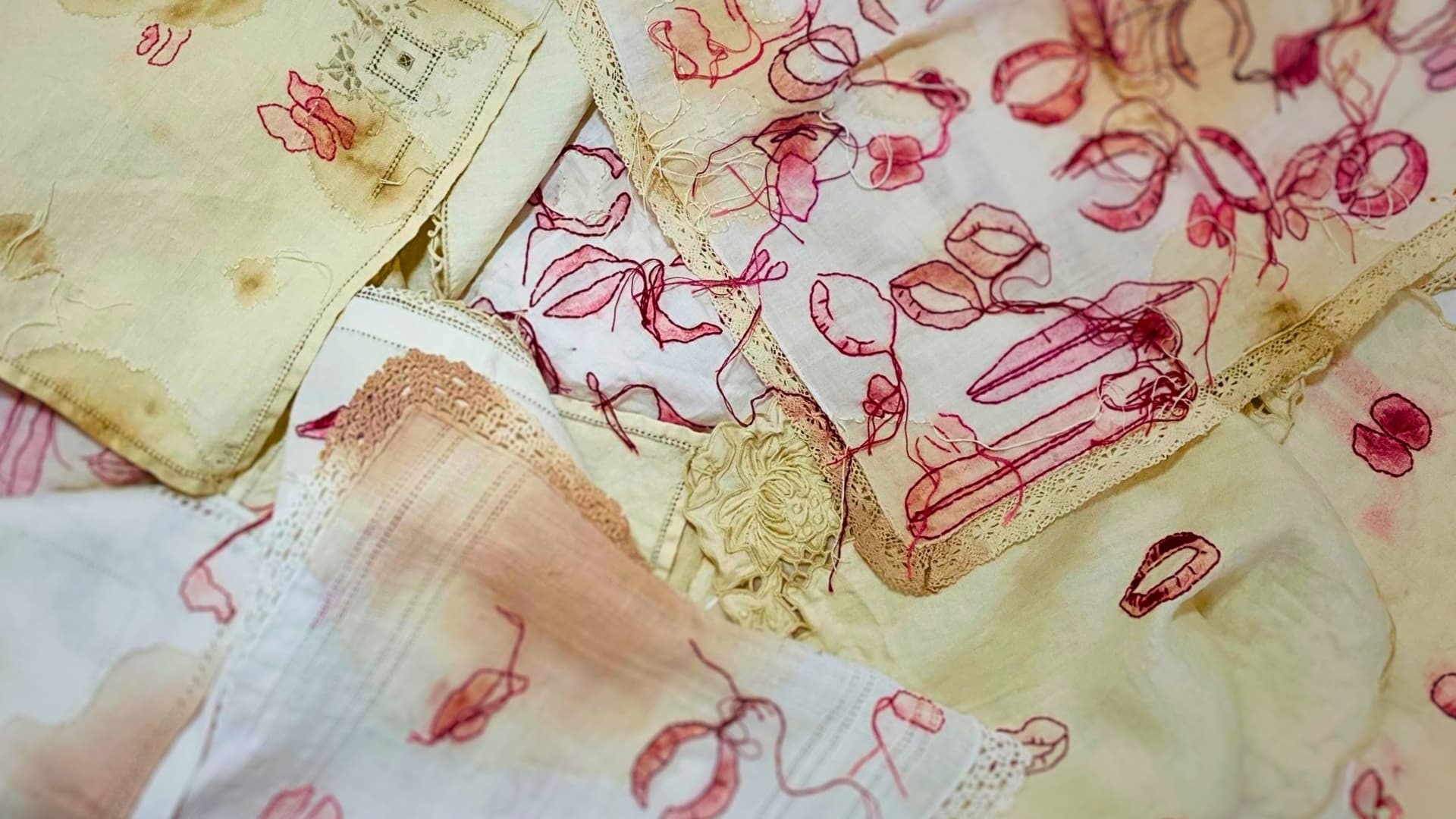
1 comment
zahar01
Right here is the right site for everyone who really wants to understand this topic.
You know a whole lot its almost tough to argue
with you (not that I personally will need to…HaHa).
You certainly put a brand new spin on a subject which has been written about for
a long time. Excellent stuff, just wonderful!